Extra resources
Web Discovery Activities
1. APPEARANCE
Do this activity to
- practise your listening.
- watch two videos about fashion and style.
- learn new vocabulary.
INTRODUCTION
This interview will tell you more about how fashion stylists work and how enthusiastic they feel about their job.
INSTRUCTIONS
- Open this document to answer the questions. Print it out to hand it in or email it to your teacher.
- Go to this website.
- Watch the video Becoming a Fashion Stylist. You don't need to understand all the words.
- Choose the right answer to the questions in this document.
QUESTIONS:
1. What does a fashion stylist do?
- He/She creates an image that sends a message about a person.
- He/She creates a message that sends an image about a person.
- He/She creates a person with a message.
2. What skill is not necessary to be a fashion stylist?
- Determination
- Passion for fashion
- Laziness
3. How do you get work experience?
- By studying really hard
- By helping expert people
- By offering your assistance at local shows in your area
4. What is the best way to learn?
- Working alone
- Working with people with lots of experience
- Looking in the yellow pages
5. How do you take a course in fashion and style?
- By contacting fashion colleges
- By contacting your friends
- By contacting local shops
FURTHER PRACTICE
On the same website, watch the video Life of a Fashion Stylist and choose the right answers to the following questions.
QUESTIONS:
1. How did she get into this line of work?
- She decided to be a fashion stylist after her son was born.
- She decided to be a fashion stylist when her son was 15.
- She never wanted to be a fashion stylist.
2. What is the best part of her job?
- The long working hours.
- The boring people she works with.
- The interesting, lovely, wise people she works with.
3. What is her favourite fashion item?
- A bracelet
- A necklace
- A skirt
2. BUYING AND SELLING
Do this activity to
- practise your listening skills.
- learn more about supermarket techniques to make you buy more.
INTRODUCTION
Supermarkets often use tricks to make you buy more.
INSTRUCTIONS
- Open this document to answer the questions. Print it out to hand in or email it to your teacher.
- Go to this website.
- Watch the video titled How do supermarkets try and make us spend more money? You don't need to understand all the words.
- Watch it again and choose the correct answers for PART 1.
- Then, watch the second part of the video titled How do supermarkets lure us in to start with?
- Watch it again and choose the correct answers for PART 2.
Useful vocabulary:
- Aisle: Row between shelves in a supermarket.
- Bargain: item sold at lower price than normal.
- Lure: Attract
- Stuff: Things, food, etc.
PART 1
How does Jane define supermarkets?
- Supermarkets are just big machines to make us spend more money than we intended.
- Supermarkets are like big machines to make us cry.
- Supermarkets are big shops where you can buy everything.
What advice does she give?
- Never shop after you have eaten.
- Never shop if you are not hungry.
- Never shop if you are hungry.
The most expensive stuff is...
- at the end of the aisle.
- on the bottom shelf.
- on the top shelf.
PART 2
Supermarkets lure us in with...
- special offers and free food.
- free offers and special parking.
- free parking and lots of special offers.
Jane thinks that...
- a lot of people use a credit card with the special offers.
- very few people buy things they don't need.
- a lot of people buy things they don't need.
PART 3
Bargains are not found on...
- the top shelf.
- the bottom shelf.
- the middle shelf.
3. CRIME AND PUNISHMENT
Do this activity to
- practise your listening.
- discover the reality about Forensic Scientists working in CSI.
INTRODUCTION
What we think we know about crime scene investigation is what we can see on TV series like CSI. This video shows us the differences between reality and fiction explaining how a Forensic Scientist works in a Crime Laboratory.
INSTRUCTIONS:
- Open this document to answer the questions. Print it out to hand it in or email it to your teacher.
- Search the YOUNIVERSITYTV website.
- Click on the featured video 'Forensic Scientist' and watch it.
- Find the answers to the following questions. You don't need to understand all the words.
QUESTIONS
- What do forensic scientists study?
- What is the primary responsibility of forensic scientists?
- What is the difference between this job and the typical crime scene TV show?
- Do forensic scientists spend more time in the laboratory or into the field?
- What do you need to do as a training to be a forensic scientist?
- What specific characteristics can help you to be a great forensic scientist?
FURTHER READING: CAREER VIDEOS
On this website students can search for more videos and information about the jobs they like. Tell them to click on ‘Career videos’ on the upper menu and find out about different careers.
4. ENVIRONMENT
Do this activity to
- practise your listening.
- watch two videos about saving energy at home.
- learn new vocabulary.
INTRODUCTION
By changing our habits a little bit we can save energy and at the same time keep our planet clean.
INSTRUCTIONS:
- Open this document to answer the questions. Print it out to hand it in or email it to your teacher.
- Search the NATIONAL GEOGRAPHIC ENVIRONMENT VIDEO website. Click on 'Going Green' on the left menu, and then on
'Green Home Makeover' on the same menu.
- Click on 'Bathroom' to watch the first video. You don't need to understand all the words.
- Take the BATHROOM quiz.
- Click on 'Living Room' to watch the second video. You don't need to understand all the words.
- Take the LIVING ROOM quiz.
BATHROOM quiz
Circle the correct answer
1) What consumes most water in the bathroom?
- The shower
- The toilet
- Plumbing leaks
2) Which showerheads should we consider changing in order to save water?
- Showerheads made before 1992
- Showerheads made after 1992
- Showerheads with a low flow rate
3) Which of these tricks won't help us to save water?
- Use a glass of water to rinse your teeth
- Don't flush rubbish down the toilet
- Choosing a bath over a shower
LIVING ROOM quiz
Circle the correct answer
1) Which of these options is least likely to help us reduce our electricity bill when we are not using electronic devices like the TV, DVD players, or computers?
- Unplugging the electronic devices
- Using a power strip for multiple devices
- Turning off the electronic devices
2) Which electronic device is the biggest power consumer in the living room?
- The television
- The DVD player
- The game console
3) What is a good alternative to carpets?
- Plastic covering
- Hard wood
- Synthetic floor
5. HEALTH AND SOCIAL ISSUES
Do this activity to
- practise your listening and reading.
- watch a video to learn how to reduce stress in your daily life.
- learn more about activities which can help you cope better with stress.
INTRODUCTION
Stress is a fact of life but there are a number of ways we can alter our lifestyle to cope better with stress. Here you will find the best tips on how to change our life and reduce stress.INSTRUCTIONS:
- Open this document to answer the questions. Print it out to hand it in or email it to your teacher.
- Search the VIDEOJUG website.
- Click on 'Play Video' to watch the Video 'How to Change Your Life And Reduce Stress'.
- Click on the 'Text Version' section on the menu under the video player to help you find the answers to the following questions. You don't need to understand all the words.
QUESTIONS
- What does physical exercise release in our brain?
- Why do they recommend staying fit and healthy?
- Why is sleep important?
- Is it good to skip meals in order to release stress?
- What vitamins help with mental activity, cell repair and fight infection?
- Can alcohol consumption help reduce our stress levels?
- Why are 6 cups of coffee dangerous?
- Does nicotine dependency act as a relaxant and aid for mood control?
6. HOME AND ARCHITECTURE
Do this activity to
- practise your listening and reading skills.
- explore the seven wonders of the ancient world.
INTRODUCTION
The Great Pyramid of Giza in Egypt is one of the seven ancient wonders of the world. But there are six more for you to discover. These were the predecessors of the modern wonders today. Let's get started by reading first and watching a video later.
INSTRUCTIONS
- Open this document to answer the questions. Print it out to hand it in or email it to your teacher.
- Go to this website. Click on each picture to complete the information in this document. You don't need to understand all the words. Use The Richmond Electronic dictionary.
COMPLETE:
Name of the ancient Wonder:
Location:
Name of the ancient Wonder:
Location:
Name of the ancient Wonder:
Location:
Name of the ancient Wonder:
Location:
Name of the ancient Wonder:
Location:
Name of the ancient Wonder:
Location:
Name of the ancient Wonder:
Location:
FURTHER PRACTICE
Go to this website and watch the video to say if these sentences are true or false:
| 1. The Great Pyramid is the only ancient wonder that can still be seen today. | TRUE | FALSE |
| 2. The Great Pyramid of Giza is the smallest of the three great pyramids. | TRUE | FALSE |
| 3. It took more than ten years to build this pyramid. | TRUE | FALSE |
| 4. The pyramid consists of twelve million stones. | TRUE | FALSE |
7. JOBS
Do this activity to
- practise your listening.
- watch four videos about a dog whisperer.
- learn new vocabulary.
INTRODUCTION
Cesar Millan works as a dog educator. He is an expert in dog rehabilitation. The first step to help owners control their dogs' behaviour is to diagnose the problem.
INSTRUCTIONS:
- Open this document to answer the questions. Print it out to hand it in or email it to your teacher.
- Search the DOG WHISPERER website. Then click on 'Test your skills' to go to the videos and try to outsmart Cesar. There are four videos.
- Click on 'Begin' to watch the Video. You don't need to understand all the words. Use The Richmond Electronic dictionary.
- Choose a diagnosis from the list. Cesar, the dog whisperer, will let you know if you are correct.
- After reading the information about the problem watch Cesar's diagnosis.
- Then click on NEXT to watch other videos and diagnose the other cases.
QUIZ: DIAGNOSE THAT DOG! (Adapted from The Dog Whisperer website)
Circle the correct answer
1. Patient: TOOTSIE AND GINGER
- The dogs have sibling rivalry.
- Their owner is reluctant to discipline them.
- Tootsie is aggressive and Ginger is passive.
- Ginger's owner encourages bad behaviour.
2. Patient: BUFFY
- The horses intimidate Buffy.
- Buffy's owner does not spend time with her.
- Fences put Buffy into a crazed state.
- The dog is in predator mode around horses.
3. Patient: KIKO
- Lack of exercise makes Kiko aggressive.
- Kiko is afraid of the rottweiler.
- He senses that his owner is afraid.
- The dog is an escape artist.
4. Patient: WILLIE
- The dog is hiding from his owners.
- He thinks growling is a game.
- Willie is acting upon his emotional distress.
- The owner provokes and frustrates Willie.
How many did you get correct? ________
8. SPORTS
Do this activity to
- practise your reading.
- watch a video about extreme sports.
- learn more about extreme sports.
INSTRUCTIONS:
- Open this document to answer the questions. Print it out to hand it in or email it to your teacher.
- Search the EXTREME SPORTS website.
- Watch the Video: 'What are these extreme sports?'
- Click on the 'Did you know?' section and find the answers to the following questions. You don't need to understand all the words.
QUESTIONS
- When was the first time the term 'extreme sport' appeared in a dictionary?
- Is the phrase 'extreme sports' usually applied to individual or team sports?
- Which newspaper published an article in 1998 talking about the roots of the extreme sports movement?
- What company first associated a product with extreme sports to grab the attention of young consumers?
- What was the company's slogan?
- What is the name of the competition that debuted in 1995?
- How much did Tony Hawk earn in 2004?
- Where is Max Dufour from? What extreme sport does he do?
- How many medals has Max Dufour won in the X Games in his life? What type of medals?
- What has Thrasher skateboard magazine criticized?
FURTHER READING: WHAT IS HELISKIING?
Search THIS WEBSITE to find out more information about this extreme sport.
9. TRAVEL
Do this activity to
- practise your reading.
- review vocabulary about countries and nationalities.
INTRODUCTION
Find out more about the countries below.
INSTRUCTIONS
- Open this document to answer the questions. Print it out to hand it in or email it to your teacher.
- Can you identify the maps? Search the Fact Monster website.
- Once there, click on a region, for example Europe and find the countries.
- Complete the rest of the information on the table. You don't need to understand all the words.
- For further practice, there are interesting quizzes and puzzles in Geography Fun as well.
| MAP | 1. COUNTRY 2. NATIONALITY 3. LANGUAGE 4. CAPITAL CITY |
FLAG |
|---|---|---|
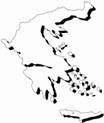 |
1. 2. 3. 4. |
|
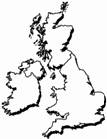 |
1. 2. 3. 4. |
|
 |
1. 2. 3. 4. |
|
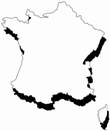 |
1. 2. 3. 4. |
|
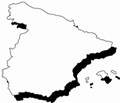 |
1. 2. 3. 4. |
|
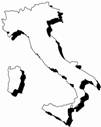 |
1. 2. 3. 4. |
FURTHER PRACTICE: ENGLISH IN THE WORLD
How important is the English language in the world? Search this website.
Click on the map and find:
- Two countries in South America where English is spoken.
- Five countries in Africa where English is spoken.
- Two countries and four territories where English is spoken in Europe.

